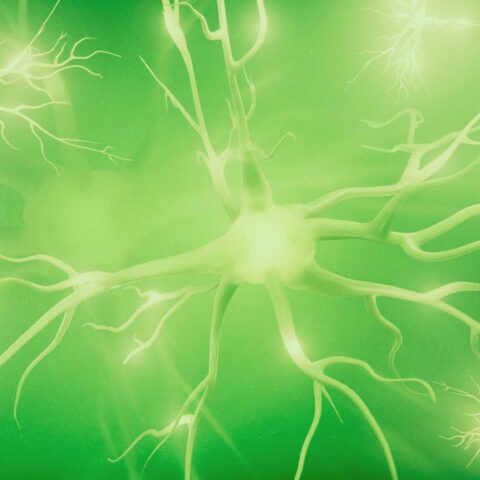Last Updated: March 18, 2025, 10 am UTC
The FDA’s Center for Drug Evaluation and Research issued a structured, meticulous roadmap to advance the clinical development of psychedelic drugs, highlighting key considerations in regulatory frameworks, ethical conduct, chemistry manufacturing controls (CMC), and clinical studies to ensure safety and efficacy in addressing psychiatric and substance use disorders. In this blog, Premier Research dissects the pivotal components of this draft guidance, offering critical insights for sponsors and investigators in this evolving landscape.
Situation Analysis
The interest of the U.S. Food and Drug Administration (FDA) and other regulatory agencies in psychedelic drug development stems from the recognition of the potential therapeutic benefits of these substances, the need for new treatment modalities for mental health conditions, and a shifting societal and legal landscape. Through regulatory oversight and guidance, agencies like the FDA aim to balance the promise of psychedelic therapies with the necessity for rigorous scientific evaluation and risk mitigation to ensure public safety and health.
In June 2023, the FDA’s Center for Drug Evaluation and Research (CDER) issued a draft guidance document titled “Psychedelic Drugs: Considerations for Clinical Investigations Guidance for Industry.”1 The non-binding guidance document provides a structured roadmap to facilitate the development of psychedelic drugs, offering recommendations encompassing the developmental and evaluative process.
It is essential for sponsors and investigators to understand this guidance to develop safe, effective, and compliant psychedelic therapies for medical conditions such as psychiatric disorders and substance use disorders.
The drug development and regulatory experts at Premier Research reviewed FDA’s draft guidance and summarized five key points that drug development professionals need to be well-acquainted with:
Regulatory Framework and Its Significance
The FDA’s guidance provides a non-binding, clear framework, and direction for the development of psychedelic drugs, emphasizing the ethical conduct of clinical trials and proper developmental programs.
The FDA’s guidance outlines the agency’s prevailing thinking on the topic, intended to provide clarity and direction. This guidance does not create legally binding responsibilities but rather recommends practices that are in alignment with the FDA’s current stance on the development of psychedelic drugs. It is a beacon for sponsors and investigators, ensuring the proper configuration of programs that will support the approval of a psychedelic drug, and assisting in the ethical conduct of clinical trials.
Challenges in Psychedelic Drug Development
Due to the unique nature of psychedelic drugs altering perception and consciousness, meticulous and reflective clinical study designs are essential to accurately interpret results and overcome inherent challenges.
Psychedelic drugs, by virtue of their capacity to cause intense perceptual disturbances and consciousness alterations, pose unique challenges in clinical study design. These alterations can last several hours, demanding meticulous study design to interpret the results accurately. The interest in the therapeutic potential of psychedelic drugs is increasing, and the design of clinical studies must reflect the unique characteristics and challenges these substances pose.
Given the emerging nature of this field, there is a scarcity of experiences regarding the configuration of programs that may support the approval of psychedelic drugs. This, coupled with the unusual characteristics of psychedelic drugs like rapid-onset and long-term benefits after minimal doses, requires that clinical studies be designed with heightened consideration, ensuring the interpretability of results.
Chemistry, Manufacturing, and Controls
Strict requirements are outlined in the guidance for chemical composition, manufacturing processes, and control mechanisms, emphasizing adherence to current good manufacturing practice (cGMP) and maintaining product quality, especially when derived from botanical sources.
This section of the guidance details the stringent requirements relating to the chemical composition, manufacturing processes, and control mechanisms that must be instituted during the development of psychedelic drugs. Here, thorough and transparent detailing of the chemistry data, adherence to good manufacturing practices, and maintenance of product quality, purity, and strength are emphasized.
In cases where psychedelics are derived from botanical sources like plants or fungi, different regulations and considerations come into play, emphasizing the importance of classifying the substances appropriately. Compliance with the cGMP is particularly highlighted, emphasizing its critical role in ensuring product quality and safety.
Clinical Pharmacology and Nonclinical Program
A thorough understanding of both clinical and nonclinical pharmacology is vital, with an emphasis on comprehensive safety assessments, including detailed pharmacological and toxicological studies for drugs with inadequate history of clinical exposure.
The guidance emphasizes the significance of a well-rounded understanding of both clinical and nonclinical pharmacology of psychedelic drugs. For drugs with established safety through extensive human exposure and previous clinical studies, some concessions are made allowing for the initiation of clinical studies even in the absence of typical animal toxicology testing.
However, for psychedelic drugs without a history of adequate clinical exposure, thorough safety assessments are paramount before any human testing is considered. These include adequate information about pharmacological and toxicological studies, and a detailed evaluation of binding to serotonin receptor subtypes to anticipate potential impacts, like heart valvulopathy linked to binding to the 5-HT2B receptor subtype.
Clinical Studies and Ethical Concerns
Adequate, well-controlled clinical studies and rigorous ethical conduct are stressed, along with the implementation of risk mitigation strategies considering the potential public health impacts and ensuring overall benefit-risk assessment.
Developing a structured approach to clinical studies is emphasized, with the guidance detailing the need for adequate and well-controlled (AWC) clinical studies to meet the substantial evidence standard to establish effectiveness. The characteristic effects of psychedelic drugs, such as intense perceptual disturbances and alterations in consciousness, make the use of a traditional placebo problematic, necessitating innovative solutions to avoid biases, like functional unblinding and the nocebo effect.
In addition, it stresses the importance of meticulous ethical conduct, safety-monitoring, and informed consent processes, especially given the vulnerabilities induced by psychedelic drugs. Issues of potential biases introduced by the integration of psychotherapeutic interventions are also addressed, highlighting the importance of precise characterization of their contributions to the treatment effect.
Public Health Considerations and Risk Mitigation
The guidance delves deep into the vital aspect of risk mitigation, requiring sponsors to devise strategies to minimize adverse events or serious risks during clinical studies and post-marketing. It brings to light the necessity of understanding and addressing the potential public health impacts of psychedelic drugs as part of the overall benefit-risk assessment, accounting for risks related to nonmedical use, substance use disorder, accidental exposure, and overdose for both patients and non-patients.
Sponsors are advised to carefully consider the dispensation and administration locations of the drugs if approved and to anticipate the healthcare system’s capacity to prevent nonmedical use, accidental exposure, and overdose for both patients and nonpatients.
Conclusion
The FDA’s guidance on developing psychedelic drugs is comprehensive and detailed, addressing the unique aspects and challenges of psychedelic substances. It serves as a crucial reference point for sponsors and investigators, highlighting the importance of adhering to regulatory, ethical, and scientific standards. By following this guidance meticulously, the integration of psychedelic substances into therapeutic practices can be achieved responsibly and safely, unlocking their potential to address various medical conditions, and contributing to the advancement of medical science.
Next Steps
Our adept team is well-versed in navigating the intricate landscapes of psychedelic drug development and is unwavering in its commitment to adhering to established norms and protocols. We aim to help innovators spearheading new mental health solutions by harnessing the therapeutic potential of psychedelics, ensuring they are applied ethically and effectively.
For a detailed exploration of how these guidelines can be tailored to your unique situations and to comprehend how Premier Research can facilitate your regulatory journey through the intricate process of psychedelic drug development, we invite you to schedule a consultation with one of our experts. This personalized consultation will provide insights into your specific needs, challenges, and the innovative solutions we offer to address them.
[1] US Department of Health and Human Services, Food and Drug Administration, Center for Drug Evaluation and Research. Psychedelic Drugs: Considerations for Clinical Investigations: Guidance for Industry. Published June 2023. Accessed September 24, 2023. Available from: https://www.regulations.gov

 Webinar
Webinar 


 Perspectives Blog
Perspectives Blog 